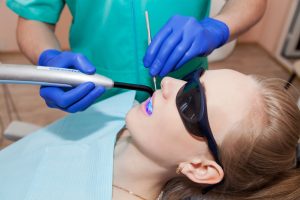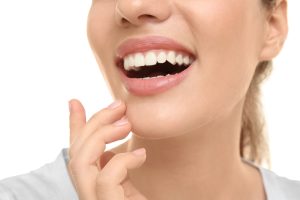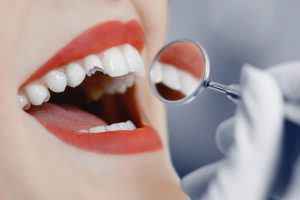Are You Ready to Transform Your Smile?
Ready to say goodbye to chipped teeth, discoloration, or gaps in your smile? At Polasek Digital Dentistry & Schaefer Dental Group, we have the answer — composite dental bonding. Under the guidance of Howell, MI, cosmetic dentist Dr. Kyle Polasek, teeth bonding is a versatile and accessible solution to address various dental concerns.
To schedule your transformation, call us today at 517-546-8983. Join us on the path to a more confident, beautiful smile with composite dental bonding.
What is Composite Dental Bonding?
Composite dental bonding, also called tooth bonding and cosmetic dental bonding, is a versatile and minimally invasive cosmetic dentistry and restorative dentistry procedure designed to enhance the appearance of teeth and correct various dental issues. During a tooth bonding procedure, a tooth-colored resin material, known as composite, is applied to the tooth’s surface and meticulously sculpted by our skilled dentist. It’s then hardened using a special curing light, bonding it to the tooth.
Benefits of Composite Dental Bonding
Composite dental bonding offers patients the following advantages over other cosmetic dental treatments:
- Aesthetic Improvement: Composite bonding can be color-matched to your natural teeth, making it virtually indistinguishable from the surrounding enamel. It can fix a variety of cosmetic issues, such as chipped, discolored, or misshapen teeth, providing a more pleasing smile.
- Minimally Invasive: Unlike some other dental procedures, bonding requires minimal changes to the tooth enamel, preserving your natural tooth structure.
- Quick and Convenient: We can often complete this procedure in a single visit, making it a time-efficient option for improving your smile.
- Pain-Free: Bonding is a generally painless procedure, often without the need for anesthetics or dental sedation.
- Durable: Composite resin is strong and can withstand the forces of everyday chewing and biting.
- Repairable: If the bonding material gets damaged, we can easily replace or repair it.
- Versatile: Bonding works to correct various dental issues, from cosmetic improvements to fixing minor chips, gaps, and discoloration.
- Cost-Effective: In many cases, composite bonding is a more affordable option compared to alternatives like veneers or crowns.
- Improved Confidence: Enhancing the appearance of your teeth often leads to increased self-confidence and a better self-image.
- Conservative Approach: Bonding preserves more of your natural tooth structure compared to some other cosmetic dentistry procedures.
- Natural Look and Feel: The finished result looks and feels like your natural teeth, with no noticeable edges or seams.
- Stain-Resistant: While composite resin may stain over time, it’s generally less prone to staining than natural teeth.
- Easy Maintenance: Bonded teeth can be cared for with regular oral hygiene practices like brushing and flossing.
- Patient-Friendly: Bonding is a less intimidating procedure for patients who may be nervous about more invasive dental work.
Who Qualifies for Composite Dental Bonding?
Generally, the following factors determine whether someone qualifies for composite dental bonding:
- Cosmetic Concerns: Patients with cosmetic dental issues such as chipped, stained, discolored, or misshapen teeth often qualify for cosmetic dental bonding. It can provide a more aesthetically pleasing appearance.
- Good Oral Health: It’s essential to have a healthy oral foundation. This means no active gum disease or untreated cavities. Any underlying oral health issues should be addressed before considering bonding.
- Sufficient Tooth Structure: There should be enough healthy tooth structure remaining for bonding to be effective. If a tooth is severely damaged or decayed, alternative treatments like crowns or veneers may be more suitable.
- Stable Bite: A stable bite is necessary to prevent excessive wear and damage to the bonded teeth. If you have bite issues or bruxism (teeth grinding), Dr. Polasek may recommend addressing these concerns first.
- Realistic Expectations: Patients should have realistic expectations about the outcome of bonding. While it can significantly improve the appearance of teeth, it may not be suitable for extensive restorations or major cosmetic makeovers.
- Oral Hygiene Commitment: Patients must commit to good oral hygiene practices to maintain the bonded teeth. This includes regular brushing, flossing, and dental check-ups.
- Budget Considerations: Teeth bonding is often more affordable than other cosmetic procedures, but it’s essential to consider the cost and whether it fits within your budget.
The Composite Dental Bonding Process
Consultation
The composite dental bonding process starts with an initial consultation with our Howell cosmetic dentist, Dr. Polasek. During this consultation, you’ll have the opportunity to express your dental concerns and cosmetic goals.
Dr. Polasek will carefully evaluate your oral health, ensuring there are no underlying issues that need to be addressed before proceeding. This consultation is also an ideal time to ask questions and discuss the procedure, including the expected outcomes.
Preparation
Once you and Dr. Polasek have decided to move forward with bonding, the next step is tooth preparation. Dr. Polasek will prepare the tooth by gently creating a slightly roughened surface, promoting better adhesion of the composite resin material. Additionally, our dentist will select a shade of composite resin that closely matches the color of your natural teeth.
The Composite Dental Bonding Procedure
The bonding procedure involves several steps. First, our Howell dentist will apply a mildly acidic etching solution to the prepared tooth, creating a suitable surface for bonding. Next, he’ll use a bonding agent before layering the composite resin material on the tooth.
Dr. Polasek then sculpts and shapes the bonding material to achieve the desired tooth shape and contour. A special curing light hardens and sets the resin, a process that typically takes just a few seconds per layer. The final step involves polishing the bonded tooth surface to match the sheen and texture of your natural teeth.
Final Adjustments
Following the initial bonding, Dr. Polasek will check the bite to ensure it’s comfortable and that the bonded tooth functions properly in alignment with the surrounding teeth. Any necessary adjustments to the shape or alignment of the bonded tooth are made to achieve the desired result.
Composite Dental Bonding Aftercare
The results of your dental bonding procedure can last many years with proper care and maintenance. Follow Dr. Polasek’s recommendations to protect your investment in your smile:
- Oral Hygiene: Maintain a rigorous oral hygiene routine. Brush your teeth at least twice a day with a soft-bristle toothbrush. Use non-abrasive toothpaste to prevent scratching the bonded surface. Floss daily to remove plaque and debris around the bonded area.
- Avoid Staining Agents: Minimize consumption of foods and beverages that can stain teeth such as coffee, tea, red wine, and tobacco products. Rinse your mouth with water after consuming staining items.
- Avoid Chewing Ice and Hard Objects: Refrain from chewing on hard objects like ice, pens, or hard candies to prevent chipping or cracking.
- Use a Mouthguard for Bruxism: If you grind or clench your teeth (bruxism), wear a mouthguard at night to protect the bonded teeth.
- Regular Dental Check-Ups: Schedule routine dental check-up appointments every six months to monitor bonded teeth and address any necessary repairs or adjustments.
- Preventative Care: Consider dental sealants or fluoride treatments as recommended by your dentist for added protection against decay.
- Avoid Nail Biting and Opening Packages with Your Teeth: Prevent damage to the bonding material by refraining from using bonded teeth for tasks like nail biting or opening packages.
- Maintain a Balanced Diet: Consume a diet rich in fruits, vegetables, and dairy products to support overall oral health and tooth strength.
- Stay Hydrated: Drink plenty of water throughout the day to maintain oral moisture, reduce staining risks, and support overall oral health.
- Promptly Address Issues: Contact Polasek Digital Dentistry & Schaefer Dental Group if you notice any issues with your bonded teeth, such as chipping, staining, or discomfort, to resolve problems promptly.
Frequently Asked Questions
The teeth bonding procedure is generally painless, and most patients don’t require anesthesia. Only in cases where a tooth requires significant reshaping or if you’re particularly sensitive, your dentist may use a local anesthetic to ensure your comfort during the teeth bonding procedure.
Composite resin doesn’t respond to teeth-whitening agents. If you’re considering teeth whitening, it’s recommended to do it before the bonding procedure. Once the tooth-colored composite resin bonding is in place, it will maintain its original shade, so if you want whiter teeth, you may need to replace the bonding material.
Dental insurance coverage for composite tooth bonding can vary. In many cases, it may not be covered because it is considered a cosmetic procedure. However, if the bonding is performed to restore a decayed or damaged tooth, a portion of the cost may be covered. It’s essential to check with your dental insurance provider for specific details on coverage.
While teeth bonding is versatile, it isn’t the ideal solution for extensive dental problems. It is more suitable for minor to moderate cosmetic improvements, such as fixing chips, discoloration, or closing small gaps. Other treatments like crowns or dental veneers, may be recommended for more significant issues.








